by: Kepha March 21st, 2013 comments:
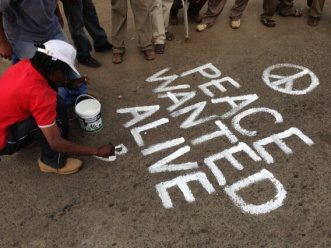
Famed local grafitti artist Solo 7 at work
The power of self-representation
A few years ago, a not-so-well-known but immensely talented rapper in Kibera wrote the following lines:
“Hakuna camera ina-face hii valley of the dying stars
Siwezi rise and shineâ€
The artist was called Heddex. He was my favorite rapper. Here he was referring to the fact that he cannot ‘rise and shine’ for there are ‘no cameras pointing toward the valley of the dying stars.’ Heddex somehow stopped rapping, perhaps after convincing himself that he couldn’t make it as a rapper in this reality. Yet at the end of every five years when elections happen in Kenya, cameras of all shapes and sizes descend on Kibera, Mathare and other slums in Nairobi. They descend for a reason. The reason unfortunately is not to make the dying stars rise and shine.
Within hours or even days of their presence, these cameras summarize the lives of a people into sound-bytes and ‘speaking pictures’. They are especially known to seek moments of action, action being violence and other animal acts of human survival. While all this is happening, they do all the talking. Opinions of residents of these locations is never sought, unless for ornamental reasons. The first-person perspectives are not covered or reported perhaps for the same reason I was once dismissed in an interview with a foreign reporter, that “I am too emotionally close to the situation to be objective…â€
It was beautiful in a way during the recent elections to see residents rise up in arms against this vulture-reporting style. Well, vultures only descend whenever there is something dying or dead. In different parts of Kenya, as well as on social media, people spoke angrily against such irresponsible reporting. In Kibera for instance, the media (mostly foreign press) were virtually sent packing at one point by angry residents. They had to come around flying in choppers and snapping away from the clouds.
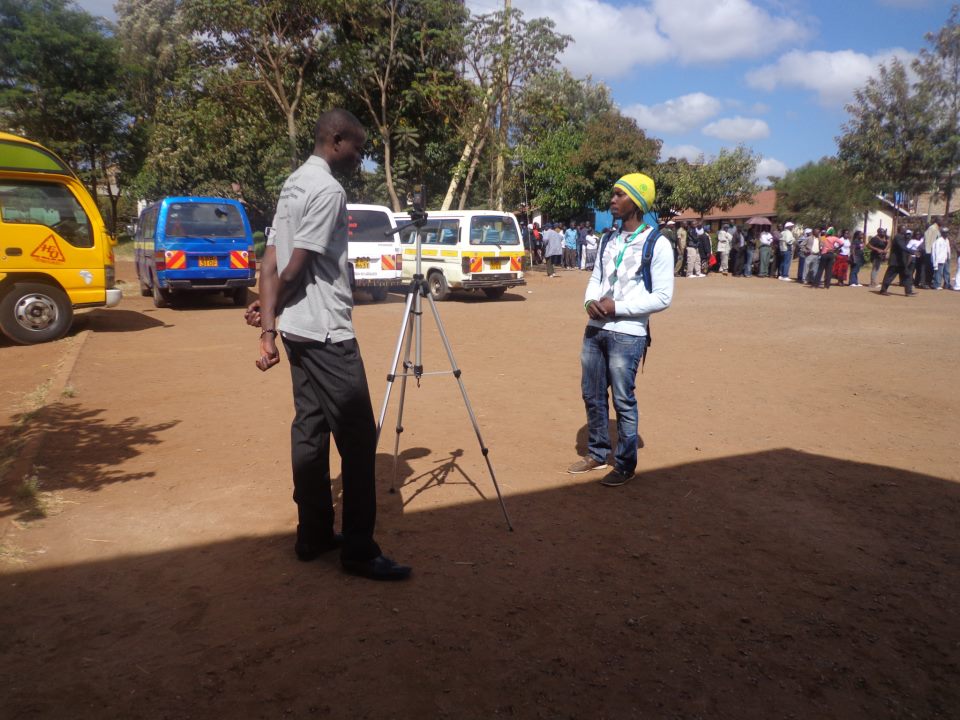
KNN reporters on the scene
Forget the disappointment of these folks. They are in business and we are living our lives. This is why we have our own cameras, and our own filmmakers and our own media: We believe that we have the responsibility to share with Kenyans and the world what is happening in some of the most misunderstood, often mis-reported and largely marginalized places in the country – the urban slums of Nairobi. We strongly believe that people have a right to speak for themselves and to write their own stories. Ordinary citizen reporters empowered with mapping skills navigate their neighborhoods to bring news and stories of happenings within the slums. Many years of misreporting and negative media have brutally condemned the residents of Nairobi slums to second hand category of citizenry who cannot even speak for themselves. This situation has contributed to huge stigma that for a long time has destroyed the self-esteem of young people struggling to make it in these neighborhoods – self-esteem being the most valuable ingredient in any human being’s progress. This is why Map Kibera Trust was formed — to empower residents in places like Kibera, Mathare and Mukuru – 3 of the biggest slums in Nairobi — to engage in citizen mapping as well as citizen reporting in their own neighborhoods.
Preventing violence works from the ground up
It is likely that many NGOs, agencies and individuals will – or may already have started talking about how they prevented violence. The truth is that most organizations had shut down operations in the slums days before the general elections. Many people had stocked a lot of food stuff and purchases for fear that shops would close. Many shops actually closed and prices hiked overnight in the few shops that remained open. The streets were mostly patrolled by a few residents and community leaders as well as uniformed policemen and intelligence personnel who were mostly in plain clothes. In this rather challenging situation, some organizations however could not pull out or shut down operations in these locations mainly because their beneficiaries, members and staff lived there, besides, they had set out in the first place to be there; open and operational at the worst possible moments, to help these communities go through the election period safe and if possible with a positive outlook and optimism.
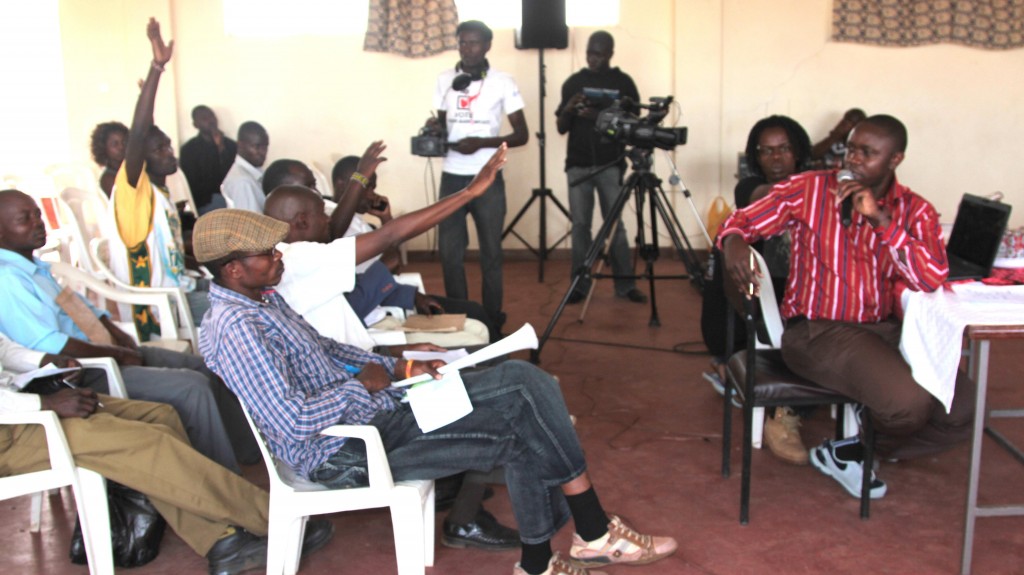
Public debate for parliamentary candidates in Kibera organized by Hotsun Foundation on 22nd Feb 2013
While a few organizations suspended their projects in the slums during the period, a few home-grown organizations regularly sat in meetings to discuss how to join hands in preparing for and tackling extraordinary eventualities. KCODA, Pamoja FM, Map Kibera, Kamukunji Pressure Group, CREAW, the Langata District Peace Committee, Community Policing groups and the office of the District Commissioner joined efforts to create a network called the Kibera Civic Watch Consortium, a body that would respond to and coordinate the community’s efforts to maintain peace and provide interventions where possible. Hotsun Foundation even managed to bring together a host of parliamentary candidates to the first parliamentary debate in Kibra ahead of the elections, which I moderated. Influential opinion leaders held meetings with the police officials and candidates. Ahead of the elections, these local efforts even invited the Commissioner of Police himself to Kibera and Mathare slums to speak at the public security meetings.
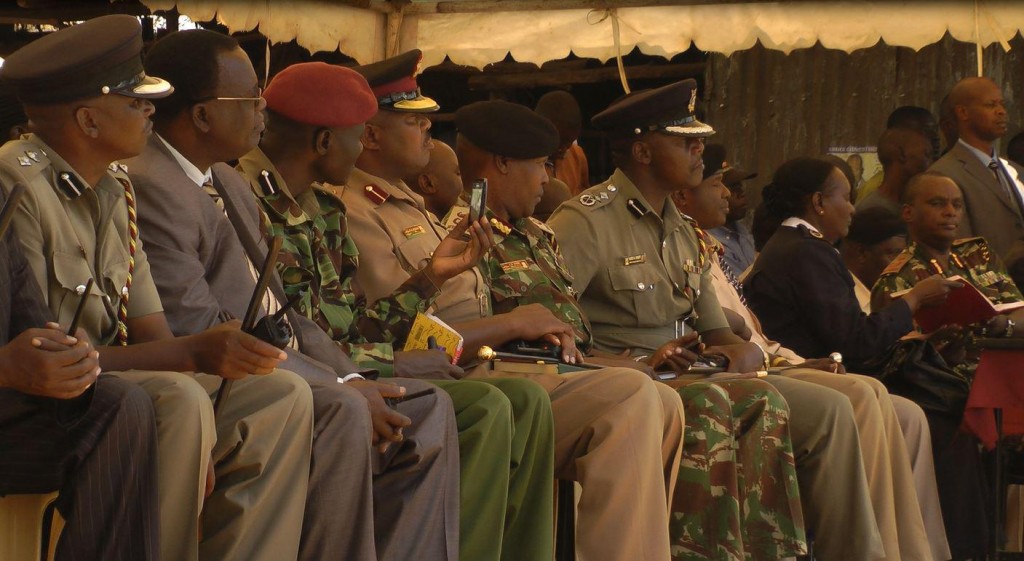
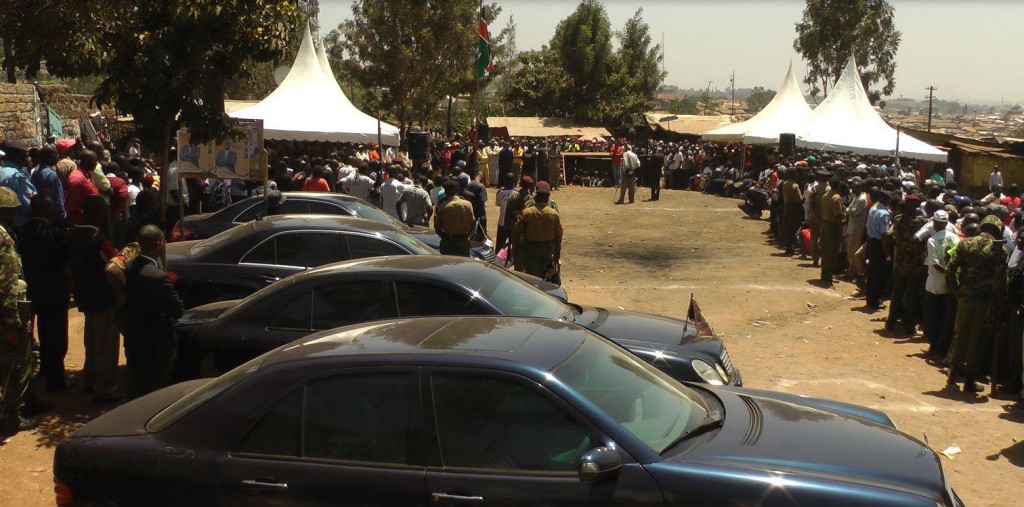
The Police Commissioner attends a public security meeting at Kamukunji grounds Kibera on the 2nd March 2013
Map Kibera: The role we played
For the 2013 elections we had created election specific maps for Kibera and Mathare locations marking all the polling stations and ward boundaries and providing background information about each one. These maps were intended to help the different actors to understand the complex slum dynamics and even provide information on access to various points of interest. Ahead of the elections, we distributed these maps to several organizations including the police and security organs. (The first thing you will see inside the District Commissioner’s office in Kibera is the first and the latest Kibra constituency elections map made by Map Kibera Trust). In the constituency office of the District Committee there is our latest security map on the wall which the committee used regularly in monitoring security during the elections period. And as one drives or walks into Kibera through Kibera Drive, they will see a large wall-painting of the security map. This wall painting captures the attention of hundreds of residents and visitors daily. Another wall painting of the security map is at Darajani junction at Makina in Kibera. Next to these wall paintings of the maps, is the SMS number used for citizen reporting during the elections period.
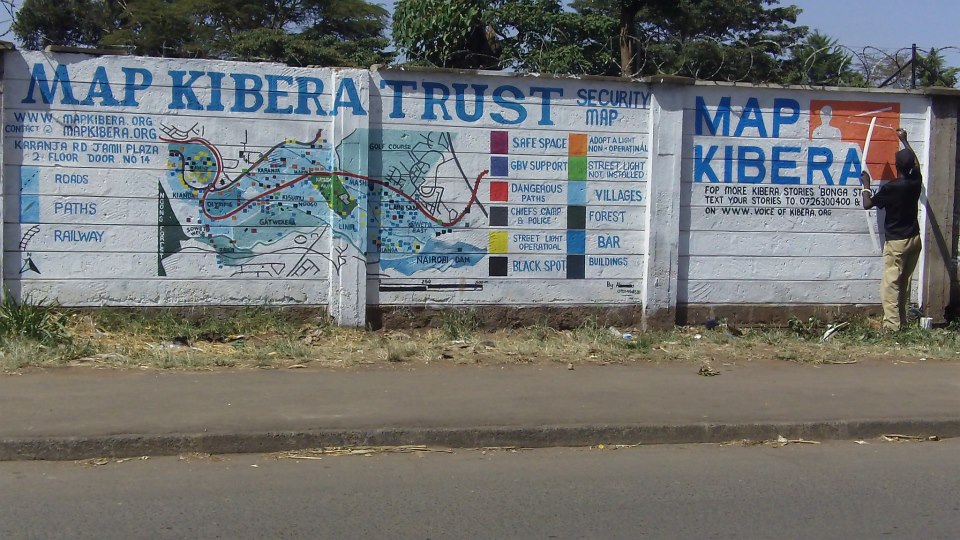
The background information on each polling station includes information on the nearest service providers, particularly the security and health service providers. Besides distributing the maps to the these important entities, we made presentations to them on the interpretation of the map, a overview especially of the security situation based on the security map. As well, we had partnered with several service providers who were on standby to act on any information. Most importantly we stationed our trained citizen reporters in each polling station to be relaying SMS news to our verification team to be verified and approved before being posted on our Voice of Kibera and Voice of Mathare websites.
The Map Kibera verification team dealt with every information that came in, calling back and forth to establish the facts and figures about every report sent in. Our video teams rushed to scenes, most of which were not known or easily accessed by the mainstream or foreign press to capture instant news which they edited and uploaded on Youtube. Members also took photos and posted them to our blogs and Facebook group. In this verification process, the team succeeded in dismissing several false alarms, wrong information and propaganda for violence. In addition and in response, security organs and emergency service providers enhanced their presence in these areas highly reducing chances of violence. In one instance, when many reports were sent about youth gathering around in groups in one area of Kibera, after several phone calls with the security organs, the Police Commissioner authorized a chopper to fly around conducting a security check, the crowds soon dispersed and calm returned.
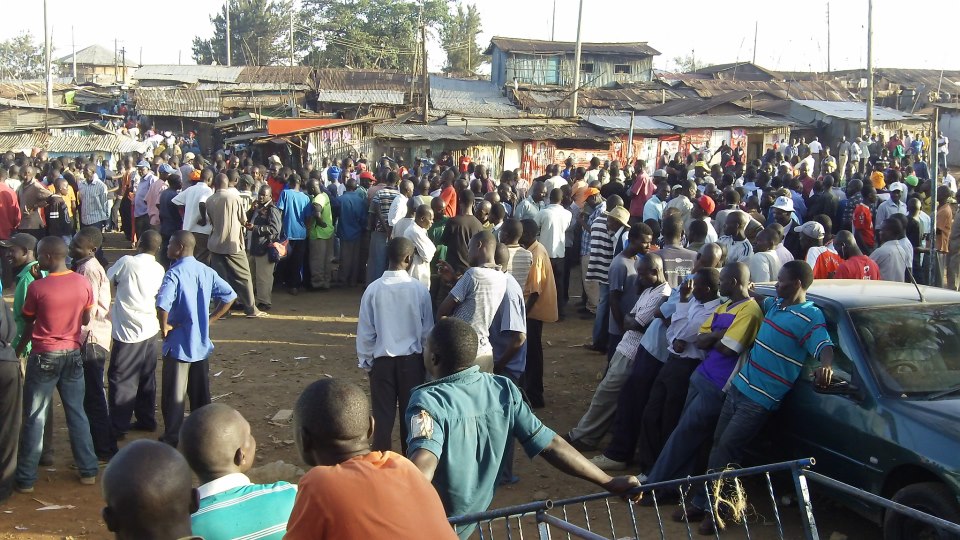
Kibera residents awaiting election results
In Mathare, there was a tense moment at St Teresa’s tallying centre when a candidate attempted to reject the results. This situation was inflamed by some people who claimed that violence had broken out and who were sending text messages around. We quickly checked this information working with our reporters on site and finally dismissed these claims as sensational and not worth raising an alarm.
Intense is what I would call the activities of Map Kibera teams on the Election Day. At the end of it, we were glad that due to the joint effort of close to 50 election monitors and citizen reporters in the project locations, our effort likely contributed to the suppression of violence and prevention of escalating election conflicts. We did not switch to our Plan B (Emergency) or Plan C (Crisis and humanitarian intervention) plans. Particularly our partnership with the Uchaguzi project and Ushahidi ensured that our teams had a great complementary workspace at the iHub, which helped our team members have a easy time and counter the technical hitches with ease. In turn we contributed reports coming into our sites back to Uchaguzi and helped instantly verify any of their reports coming from the slums. We worked together sometimes till a late as 1 am verifying reports and monitoring trends of the elections.
But to say this does not mean that we are celebrating. The job is not yet done, we still have to work throughout the tense political period to enhance awareness and to prevent violent conflict in the slums of Nairobi. Whatever the future brings, we will not put down our tools until we see a completely peaceful transition, and we have vowed to wash out the demeaning tag of ‘post election violence hotspots’ in the city’s slums. May be one day some talented kid would smile and say “Kuna cameras zina-face hii mountain of the great stars, tunaweza rise and shine.â€
by: Kepha January 24th, 2013 comments:
Map Kibera Trust has been a bee-hive of activities lately! Despite the social context changing drastically due to a general security decline in Nairobi – the fear of bombs and terrorist attacks — as well as the fast buildup of election activities in Kibera, Mathare and Mukuru, our teams have done a lot to reach out to the community and meet our various objectives using our digital platforms.
In Kibera, we have among other things succeeded in conducting a re-mapping of Kibera, activated existing community networks through the community forums that we have organized, and enhanced dialogue with community leaders and representatives leading to better ideas and even new suggestions to strengthen our work. In November, we made the first major print-out of the edited maps and engaged in an elaborate map-distribution drive (see our detailed blog post) that saw us distribute 109 maps to 83 different institutions so far. We are already receiving great feedback that will help our planning for the next steps. KNN have continued making videos and posting them on their youtube channel. Voice of Kibera has intensified their community outreach to publicize the SMS line in order to improve submissions.
All three programmes have spent much time in Mukuru and Mathare helping pass skills to the teams in these locations and conducting in-house refresher trainings to prepare the teams for an elections related project sponsored by the United States Institute of Peace. All teams are now ready to engage in any kind of work. A modality of equipment sharing was devised in order for the other groups to get access to complete their work. Other than that, the USIP project implementation is on course and on schedule for Kibera, followed immediately by Mathare and Mukuru. The teams have completed elections boundary mapping in all the 3 locations and are currently engaged in the electoral points of interest mapping.
We have successfully set up project coordination points and project offices in Mathare and Mukuru which has improved coordination and is likely to enhance efficiency in the coordination of the projects.
Several in-house trainings have been conducted in all the 3 locations, Kibera especially benefitted from local partner organizations’ training curricular on subjects like journalism ethics and photography from Pawa254, a local organization and conducted sessions led by volunteer interns like Job Mwaura, who recently did a post-graduate academic study on Kibera News Network to be presented as a case study on Citizen Journalism. We have since agreed to expand these training opportunities to reach other teams in Mukuru and Mathare.
The organization as well participated in 3 major conferences and presented in 2 of them. Two Map Kibera Trust members attended and presented at the 7th ESRI user conference that was organized by ESRI Eastern Africa and which took place in Naivasha in early October. Later in the same month Kibera’s Director attended the ON –Omidyar Network Baraza conference in Accra, Ghana.
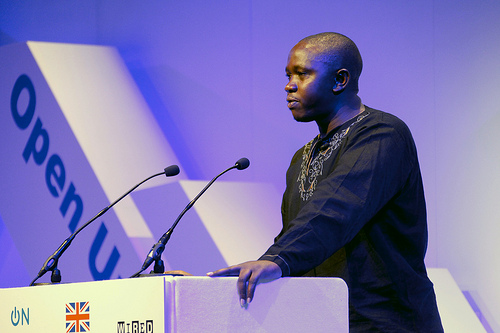
Kepha Ngito speaking at the OpenUp12 conference in London, November 2012.
In early November, Map Kibera Trust was presented on a speakers’ panel at the Open Up 2012 conference in London organized by the Department of International Development, the WIRED magazine and Omidyar Network. These conferences brought together ICT experts and leaders from different parts of the world thus provided Map Kibera Trust a global opportunity for networking.
It’s worth mentioning that the intense activity in the period has exposed gaps that have threatened our work and hampered progress in a few ways. For instance, bureaucracy in accessing government structures and institutions for permission has been the main challenge forcing us to postpone activities that require specific legal permits. This item has taken more time to deliver on as anticipated mainly because we have spent and are still spending much time and effort scaling the bureaucracy to reach the relevant decision makers. We have however widened our networks through the various meetings and forums we have been conducting and even brought some of the decision makers on board. Again, with the changing dynamics of our socio-political context, we have realized the need to enhance our capacity to track changes, document and report them in good time.
Finally, we have seen the increasing need to enhance our community engagement strategy to facilitate the usage of the data and information that we distribute to the community by the community members. For example the perennial question of “what do we do with the maps?†still persist in the community and Map Kibera still needs to do much either in modeling strategy and obtaining resources to sustain the work already happening in the community.
by: Kepha October 26th, 2012 comments:
Kepha Ngito is Executive Director of Map Kibera Trust. This post is his first in a series of personal reflections on his experiences with Map Kibera.
The Accra effect
Recently I attended the ON (Omidyar Network) -Baraza together with the African Leadership Network conference in Accra, Ghana. Both events happened one after the other at the same venue, the Movenpick Hotel. Irony is that I found peace of mind to write down these thoughts while in a 5-star hotel in Accra, Ghana, and not in a tin, stick and mud shack in the heart of Kibera, Mathare or Mukuru slums in Nairobi. These last 3 locations are normally my dwelling places, not just physical dwellings but psychological dwellings and lately, professional dwellings. I was only a visitor in Ghana, a country with a lot of history.
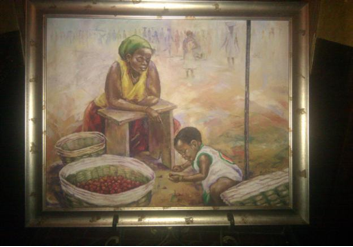 Being in Ghana or say, the comforts of the hotel ironically provided a certain ‘peace’ of mind and quiet – a rare luxury for most people living in slums — that enabled me to reflect enough to write this article. Even though I don’t compare myself to those in prison or exile, I understood why they write better and longer articles.
Being in Ghana or say, the comforts of the hotel ironically provided a certain ‘peace’ of mind and quiet – a rare luxury for most people living in slums — that enabled me to reflect enough to write this article. Even though I don’t compare myself to those in prison or exile, I understood why they write better and longer articles.
For nearly 10 months now, I have been working as the Executive Director at Map Kibera Trust. I am also one of the founding Trustees of the organization. A quick attention grabber would be that we worked with the community to make the first digital map of Kibera and ‘placed’ it on the Kenyan map after decades of its depiction as a forest on the country’s official map. We have since done the same for Mathare and Mukuru.
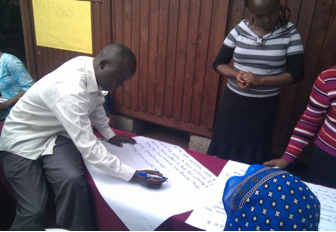
With a team of about 45 people (15 in each location), we are a group of people who believe that mapping is the first step to affirming that a people exist somewhere, even when they have been pushed to the periphery of mainstream development and tagged as ‘informal’ or depicted as a forest, a quarry site, a swamp, an electricity reserve or a garbage dump site in official maps. For many years, over 60% of Nairobi residents who reside in the many slums in and around the city have occupied the ‘non –formal’ residential areas and built what is now known as ‘informal settlements.’ Putting them on the map physically, then socially, then economically and even politically by encouraging an information-driven culture of advocacy is what we have been working at in the last 2 and half years of our existence. In this way, we attempt to ‘formalize the informal’. It’s a pity that some people’s identities are carved for them by others and by circumstances beyond their control. Where we live or lived does not necessarily make us who we are. We believe that we are not products of our environment, we are the creators of it, we sustain its beauty or unbeauty and that’s why we must be the people to change what’s wrong about it.
‘Development’ chaos in the slums
Even as I waited eagerly to interact with other invited leaders from different parts of Africa and the world at the Accra conference, I couldn’t help but reflect at the journey we have made in Kibera, Mathare and now in Mukuru. This was a journey aimed at increasing the spaces of transparency, establishing credible information and data and making it open and accessible to people. Offering marginalized residents alternative citizen platforms to voice their own stories (see Kibera News Network or Voice of Kibera), making maps, updating them regularly and teaching people how to use them to discuss development issues at community level. Slums are like oceans with many things that cannot be discovered at a glance.
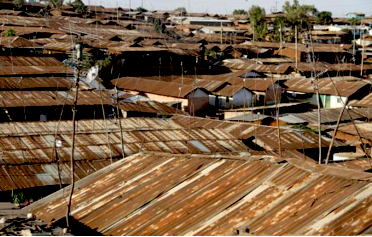 For many years, NGOs and organizations with good intentions swarmed into the slums each armed with a silver bullet – a philosophy that they strongly believed in. These projects were usually too brief to make any meaningful or sustainable effects in the community. They also had very fine points of focus with very strict statistical deliverables and timelines mostly targeting large amounts of quantitative data as the main outputs. As a result, beyond the beautiful statistics, published project reports and nice photos shared among their elite donors and ‘partners’, nothing much of substance came to or remained with the people when these projects came to an end. (Usually they tended to leave as soon as the project money ran out). This ‘development chaos’ characterized by competition for space, donor funds and the community’s goodwill led to the loss of professional integrity, lack of consistency and loss of the urge to network among like-minded initiatives. Corruption found a breeding ground and boom!, a ‘virtual slum’ was created, a slum made famous for the wrong reasons and constructed by NGOs and aid organizations whose ideas have failed to build the community and who have created idle structures that stand in the way of and frustrate new practical methods, ideas or development. And while all this is happening, the real slums and their challenges remain in the shadows wallowing in ignorance, poverty, disease and crime, and watch every day as a new truck passes by full of visiting ‘partners’. The mama mboga sits at the same roadside mud kiosk every day and barely manages to turn away her face to avoid the camera flash glare. She probably wonders why some people are so interested in her picture. She can only complain by turning her head away.
For many years, NGOs and organizations with good intentions swarmed into the slums each armed with a silver bullet – a philosophy that they strongly believed in. These projects were usually too brief to make any meaningful or sustainable effects in the community. They also had very fine points of focus with very strict statistical deliverables and timelines mostly targeting large amounts of quantitative data as the main outputs. As a result, beyond the beautiful statistics, published project reports and nice photos shared among their elite donors and ‘partners’, nothing much of substance came to or remained with the people when these projects came to an end. (Usually they tended to leave as soon as the project money ran out). This ‘development chaos’ characterized by competition for space, donor funds and the community’s goodwill led to the loss of professional integrity, lack of consistency and loss of the urge to network among like-minded initiatives. Corruption found a breeding ground and boom!, a ‘virtual slum’ was created, a slum made famous for the wrong reasons and constructed by NGOs and aid organizations whose ideas have failed to build the community and who have created idle structures that stand in the way of and frustrate new practical methods, ideas or development. And while all this is happening, the real slums and their challenges remain in the shadows wallowing in ignorance, poverty, disease and crime, and watch every day as a new truck passes by full of visiting ‘partners’. The mama mboga sits at the same roadside mud kiosk every day and barely manages to turn away her face to avoid the camera flash glare. She probably wonders why some people are so interested in her picture. She can only complain by turning her head away.










